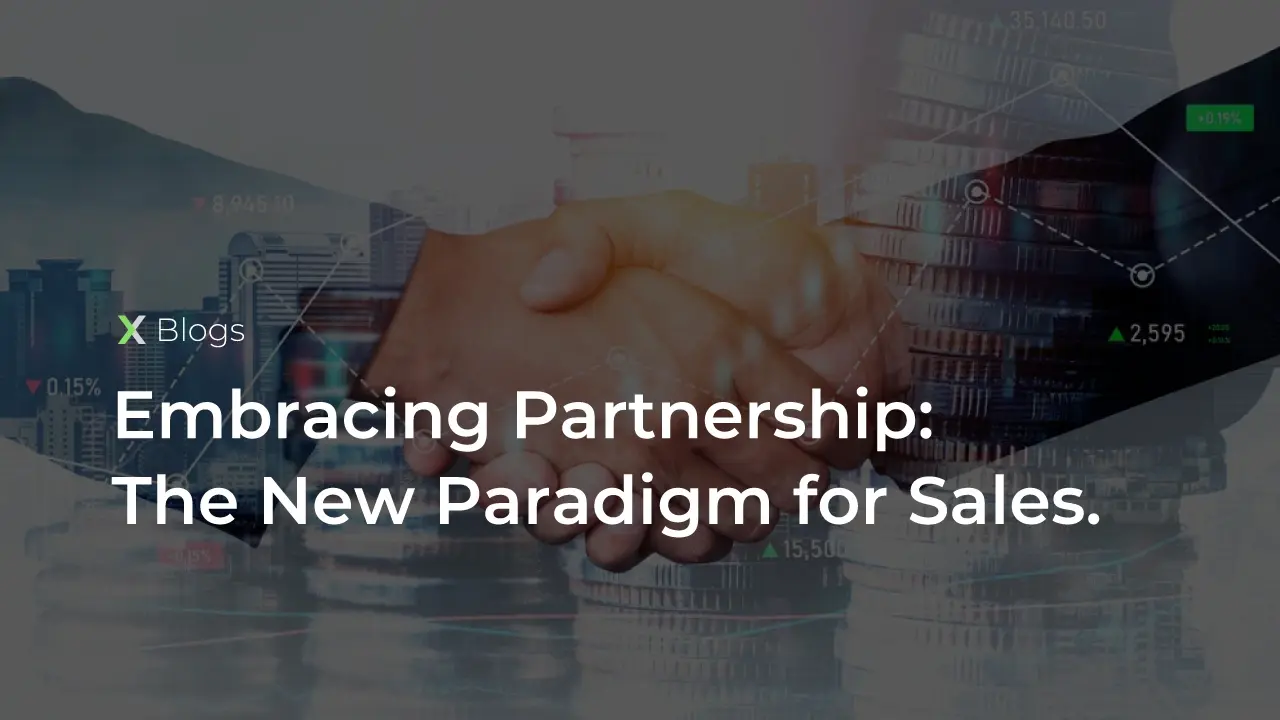
The goal of marketing is to target the right customers and get them warm enough to convert.
But when you look at digital customer experiences today, it is evident that companies are missing the bigger picture. SaaS leaders still view their businesses in siloes. While obvious touchpoints such as website experience, support, marketing, and communications are usually covered, bird’s eye views often unearth numerous discrepancies in omnichannel customer journeys.
A well-designed marketing strategy prioritizes customers right from the awareness stage before moving the focus to other stages. At its peak, such a cohesive strategy can be referred to as customer-centric marketing and it is set to be the most exciting business opportunity in 2020.
In fact, from the point-of-view of customer experience alone, SaaS companies are staring at a revenue boost of $1 billion this year!

Source: SuperOffice
What is The Emotion Economy?

Source: SlideShare
Move over ‘Service’ economy and ‘Experience’ economy - we are now entering the Emotion economy! Whether you realize it or not, your emotions often find themselves in the driving seat and (with the right motivation) can dictate every decision that you make.
If it’s true for you, it’s true for your customers.
You might not be able to tame their emotions but you can definitely influence them. But to do that, you need to understand them first.
For example, it’s easy to underestimate the overload of data that a typical buyer experiences. Rather than overusing sales lingoes such as features and specifications, SaaS companies could use storytelling and empathetic approaches to solving their customers’ pain points. For that, they need to switch to the buyer’s mind and find what makes it tick. If you dig a little into the minds of prospective clients, you will see that they are not just looking for a service with substantial value.
They want to feel valued as well.

Source: PWC
Products and prices have now been overtaken by customer experiences in being the most important factor for purchase decisions. What that implies is that customers are increasingly valuing a feel-good experience.
So, can emotion boost your bottom-line?
Customer-obsessed brands such as Apple, Facebook, and Google have succeeded by betting on the fact that emotions hold the key to customers’ wallets. 88% of CEOs are concerned about customer loyalty and over half of them believe they can improve how they connect with customers. For SaaS companies, it is even more critical that their customer experience embraces emotions because their models are based on ongoing subscriptions rather than one-off purchases. Every customer is important. And so are their emotions.
Characteristics of Customer-Centric Organizations

Source: Level5 Strategy
SaaS companies that are beating the competition in 2020 have one common characteristic. They keep their customers at the forefront of everything they do. A summary of the key features of customer-first organizational culture includes:
Defined customer experiences
Their strategy uses market research, user personas, and the optimization of various touchpoints such as the website and customer service. They also have continuous feedback loops to improve the customer’s perception of the brand.
Curated inbound marketing
Their pull-based methodology draws in the right customers using a mix of channels such as content marketing, social media management, online reputation building, and SEO.
Focus on customer advocacy
For SaaS companies, their existing loyal clients are the best shot for getting new clients. Customer-centric brands rely on referrals and word of mouth, by making customers the company’s brand ambassadors.
Multi-channel customer-centric marketing strategy
They actively monitor all the channels their customer is present on, to track and understand their needs and wants (emotion comes into the picture here).
Customer-first organizational culture:
Their ‘Customer is King’ mindset is drummed in every day and across all departments. It builds stronger empathetic connections with clients and employees.
Importance of Customer-Centric Marketing

Source: Coveo
While a customer-focused strategy will help any organization, it can be very lucrative for SaaS companies. It hits all the right notes when it comes to key metrics, boosting them and paving the way for compounding success as more users view the company as an actively engaged and emotional brand. We unpack some of the top benefits here:
Adds differentiation
The threshold of survival for SaaS companies is very high, with the number of companies offering more or less the same core product with similar features, pricing, and 24x7 customer service availability. What can brands do to differentiate themselves from the competition? Make it personal. Lending an ear to your customer’s stories and their experiences with other tools in the market will guide you towards the golden ticket - what they really want is to be heard, to connect with a real person, and for their problem to be resolved once and for all. It needs to be more than just a transactional relationship. Make that happen, and it becomes a key differentiator in customer service that nobody can take away!
New opportunities/More leads
Hitting upon a new opportunity when it’s just budding - that’s a gold mine! In order to build demand for a new product, having a finger on the pulse of the potential customer’s latest discoveries, tracking their usages, and conversations both online and offline can deliver surprising results.
Customer-centric marketing can also uncover new valuable leads from existing clients, just by paying attention to their networks. You also want them to choose you over the competition - act quickly to place an inbound marketing strategy that works in real-time, in close coordination with the CX team.
Reduced customer acquisition costs
Startups that aren’t paying attention to their customer acquisition costs initially are doomed to an early death by overspending. But it’s also dangerous to lower CACs - you tend to attract low-value customers. Customer-centric marketing ensures that you find the right balance between the volume of potential customers and CACs, without losing profitability. By quantitatively measuring potential clients and learning what is driving them to purchase decisions, early-stage SaaS companies can build your initial customer persona database. Mapping their journey brings in data on their pricing sensitivity and how long your marketing cycle needs to run to bring in a potential client. If you can do that, your conversion rates will go up and you can go back to focusing on growth.
Reduces churn
High monthly churn rates are the common denominating factor in SaaS companies, just as attrition rates are for IT companies. But what lies beneath the two is a lack of understanding of what motivates people. It’s about psychology and the art of persuasion. When you investigate customer behavior from their angle, you will see that several reasons for the churn can be easily deflected. Is it subscription renewal time but the customer has not been active? Send re-engagement emails that reach out with a personal touch and ask the right questions. But also do this to customers who are still using your service. It’s all about checking in at the right time and approaching them empathetically. The benefit: a mere 5% increase in customer retention can boost your profits by a whopping 95%.
Increased customer loyalty & satisfaction
When it comes to conversion, marketers analyze customer behavior carefully, yet only ⅓ of them analyze insights coming from customer loyalty programs, according to this CMO study by TCS. It’s highly underrated - but its benefits can result in improvements in your channel strategy, advertising efficiency, and CACs. Needless to say, fostering customer loyalty is a function of human touch. The more faces you include in your customer-centric marketing process, the better your customer satisfaction improves.
Automation and streamlining play an important role in getting the gears going, assisting the team that is answering queries from your top clients. A CX-centric organization will prioritize speed and authenticity in communications with a dedicated team analyzing loyalty programs.
Improves brand reputation
What’s the value of your brand? Is it measured in your profits? Or the effect it has had on the world. However you view it, your company’s reputation is going to affect every sale, every customer, and every employee.
Customer-centric brands have a clear advantage when it comes to maintaining a positive brand reputation. They have advocates amongst their clients, their people, and partners/vendors in the industry. Who can turn the tide when things go wrong, by stepping up for the brand? Customer advocates lead a community around the brand, which is an important factor in late-stage marketing.
Increases referrals
The SaaS industry has evolved a lot over the years, but referral marketing is still regarded as a high-growth driver. Word of mouth or ‘earned’ marketing is a powerful tactic that serves to increase outreach, lower the Cost of Acquisition, increase your ROI, and, ultimately, sales.
Improves customer lifetime value
CLV is a measure of how much a customer is worth to your business, over the course of your relationship. It simply translates to recurring revenue. The higher your CLV, the lower your cost of acquisition gets, the more your profits soar. The top SaaS growth performers are rigorous with maintaining their CLV with a customer-centric marketing strategy, according to this McKinsey study.
Customer-Centricity Checklist for Marketing Leaders

Source: HubSpot
Whether you are starting a customer-focused marketing program or trying to improve an existing one, you need to assess the current state of your organization. It gives you a baseline when creating a new approach to customer experience and implementing it across the organization. This high-level strategy checklist for marketing leaders helps document your thought process and navigate your way into the Emotion Economy:
-
Who is my ideal customer - their age, educational background, designation?
-
Who should I be targeting over the next 2 years?
-
What do my favorite clients like and dislike? Am I personalizing my campaigns towards them?
-
What are their preferred channels of communication with my business?
-
Is my brand voice in keeping with their conversational style? Do I have a customer code of conduct document?
-
Am I sharing content that they appreciate/ find valuable in their lives?
-
How long are clients willing to wait for sales assistance/ customer support?
-
Is feedback being used to improve customer experience consistently?
-
How can I tap my existing clients to find new prospects?
-
What resources will I need to implement a customer-focused marketing strategy?
Towards customer success
Ready to kickstart your new customer-centric marketing strategy? To become a truly customer-centric organization, you will need to think long-term. At RevX, we have the know-how and best practices on how to successfully launch a scalable CX strategy. Learn more about our services and talk to our RevOps experts to get started.
 Dashboards and analytics
Dashboards and analytics








